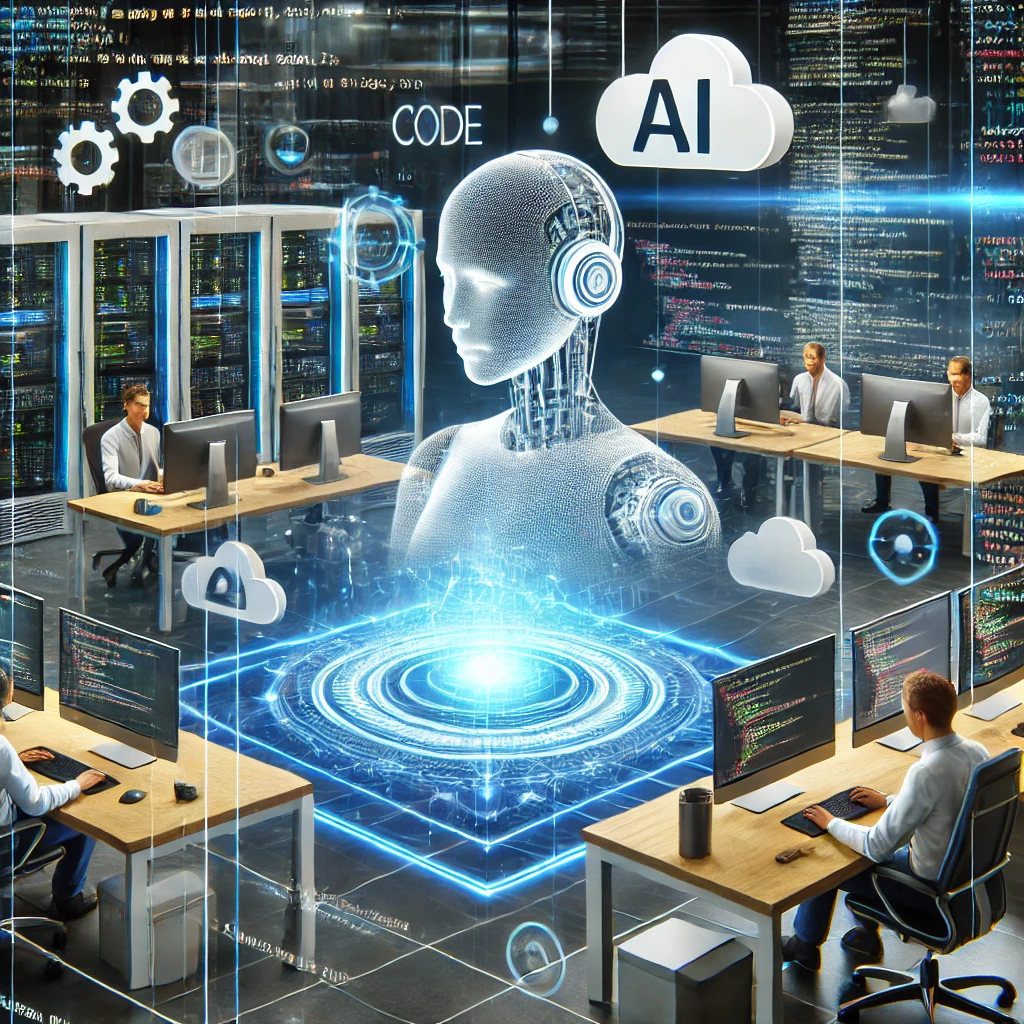AI and Code Generation Tools: Promise and Pitfalls
Artificial Intelligence has revolutionized many aspects of software development, particularly in code generation. Tools like ChatGPT, Claude, and specialized platforms such as Bolt.new promise to simplify development by generating code, facilitating prototyping, and even creating fully functional systems in the cloud without requiring traditional development environments. While these technologies are transformative in many ways, they come with significant limitations that must be addressed before they can fully replace traditional software development practices. This article explores the strengths, weaknesses, and implications of these tools, particularly in the context of scalability, maintainability, and practical applications in large-scale projects.
The Current State of AI Code Generation Tools
AI-powered tools like ChatGPT and Claude have gained attention for their ability to generate code snippets, refactor existing code, and even write complete modules. Meanwhile, platforms like Bolt.new go a step further by allowing users to create cloud-based applications without needing to set up a development environment on their machines. These tools offer significant benefits:
Advantages
- Rapid Prototyping: Enables quick development of ideas and proof-of-concept projects.
- Accessibility: Non-developers or junior developers can leverage these tools to build applications without extensive programming knowledge.
- Efficiency: Automates tasks such as boilerplate code generation, documentation, and simple logic implementation, saving time and effort.
However, these tools are far from perfect and often fall short in critical areas, particularly when compared to experienced developers.
Limitations of AI Code Generators
1. Scalability Issues
One of the biggest challenges with AI-generated code is scalability. These tools often generate verbose, redundant, or overly simplistic code that struggles with large-scale applications. Examples include:
- Class and File Overhead: AI tools may generate multiple new files or classes instead of modifying existing ones, leading to bloated codebases that are difficult to manage.
- Performance Bottlenecks: AI-generated code often lacks the optimization necessary for high-performance systems, resulting in inefficiencies when scaling applications to handle large datasets or high traffic.
- Resource Consumption: AI-generated code can consume excessive computing resources, increasing operational costs and inefficiencies.
2. Maintainability Problems
AI-generated code is often difficult to maintain due to:
- Inconsistent Coding Standards: AI-generated code can vary widely in style, structure, and naming conventions, especially when working on long-term projects.
- Lack of Contextual Understanding: These tools often fail to grasp the broader context of a project, leading to code that addresses immediate problems but introduces long-term technical debt.
- Tedious Programming Workflow: AI-generated fixes may rewrite large portions of code unnecessarily, consuming excessive tokens and making change tracking difficult.
- Complex Debugging: AI-generated code may introduce obscure bugs that are harder to trace and fix compared to manually written code.
3. Comparison to Human Developers
While AI tools can outperform junior or mid-level developers in speed and accuracy for simple tasks, they fall short in problem-solving and architectural planning. For example:
- Junior Developers: AI tools can replicate or exceed junior developers’ output by generating boilerplate code, simple algorithms, or CRUD operations.
- Mid-Level Developers: These tools can assist mid-level developers but often lack the sophistication required for complex business logic.
- Senior Developers: Senior developers excel in designing scalable, maintainable systems, integrating complex workflows, and solving edge cases—areas where AI tools currently fall short.
Bolt.new and the Promise of Cloud-Based Development
Bolt.new represents a new frontier in software development by enabling users to create applications directly in the cloud, bypassing the need for local development environments. While this approach simplifies many aspects of development, it is not without its challenges.
Strengths of Bolt.new
- Ease of Use: Enables quick project setup without dealing with dependencies.
- Collaboration: Teams can work seamlessly in the cloud without environment mismatches.
- Prototyping: Ideal for iterating on ideas and building minimum viable products (MVPs).
Weaknesses of Bolt.new
- Excessive Migrations:
- Frequent, unnecessary migrations clutter the project.
- Many migrations attempt to solve issues that should not have existed in the first place.
- Database schema inconsistencies arise from AI-generated migrations.
- Lack of Backend Support: Leads to poor separation of concerns, making refactoring and scaling difficult.
- Code Quality: Auto-generated components often lack the rigor and structure required for maintainable applications.
- Security Risks: Improperly configured cloud-based development environments can expose sensitive data.
The Future of AI in Software Development
Looking ahead, AI’s role in software development is poised to expand significantly over the next decade. Anticipated developments include:
1. More Context-Aware AI
Future AI tools will better understand a project’s broader context, leading to:
- Smarter code generation aligned with an application’s overall design.
- Reduced technical debt through better integration with existing codebases.
- AI-assisted code reviews that enhance software quality.
2. Enhanced Collaboration Between AI and Developers
Instead of replacing developers, AI will serve as a powerful assistant by:
- Automating repetitive tasks, allowing developers to focus on strategic work.
- Providing intelligent suggestions for refactoring, testing, and optimization.
- Assisting with complex problem-solving through pattern recognition and predictive analysis.
Why Software Jobs Are Secure
Despite rapid AI advancements, the demand for skilled software developers remains strong. Here’s why:
1. Complex Problem Solving
AI excels at repetitive tasks but struggles with:
- Understanding ambiguous requirements.
- Designing innovative solutions for complex, real-world problems.
- Handling ethical and regulatory considerations in software development.
2. Human Creativity and Judgment
Many aspects of software development, such as UI/UX design, system architecture, and stakeholder communication, require creativity and human judgment that AI cannot replicate.
3. Custom Solutions
Businesses require custom software tailored to their needs, which involves:
- Deep domain knowledge.
- Close collaboration between developers and business experts.
Conclusion
AI and code generation tools are reshaping the software development landscape, but they are not replacements for skilled developers. Instead, AI is becoming a collaborative partner, enhancing efficiency and innovation while developers maintain control over complex decision-making. To stay relevant, developers should embrace AI as a tool that enhances, rather than replaces, human expertise.
